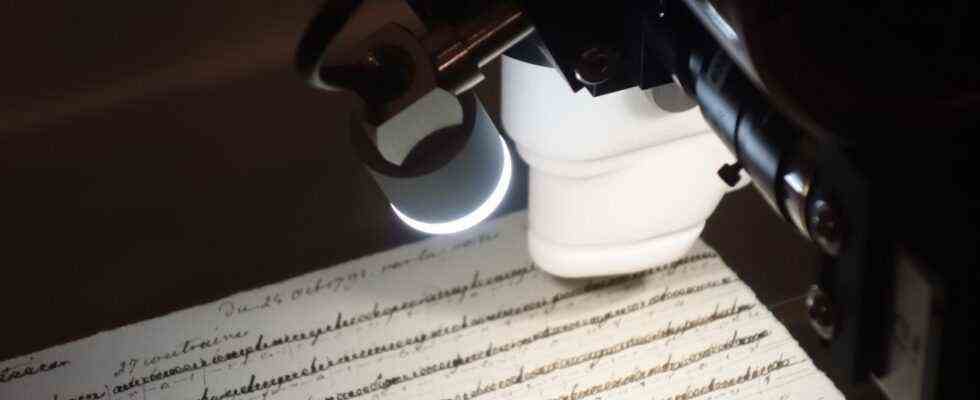For almost 150 years, illegible passages in the correspondence between the French Queen Marie-Antoinette and the Swedish Count Axel von Fersen have puzzled historians. The censored passages had often given reason for speculation. Have mistakes been whitewashed? Escape plans or even confessions of love hidden? A team led by Anne Michelin from the Sorbonne University in Paris has made the blackened areas visible by means of X-ray fluorescence analysis and the results now in the trade journal Science Advances released.
The correspondence took place between 1791 and 1792, in the midst of the French Revolution. At that time Marie-Antoinette was under house arrest in the Tuileries Palace with her husband, King Louis XVI. Nevertheless, she managed to exchange letters with Fersen in secret. The reputation of the monarch, who ruled France from 1774 to 1792, had already been damaged by the 1780s. The rumor persisted that Fersen was the biological father of her second son.
Romantic rather than political motives played a role in the count’s escape plans
This is not the only reason why the correspondence with the Swedish nobleman is of interest. In 1791 the count organized an attempt by the royal family to escape from France. The Bourbons made it as far as Varennes in the north-east of the country, but there the camouflage was blown and they were arrested again. Like other statesmen of his day, Fersen incited the European rulers to go to war against revolutionary France – with success. And the count made further escape plans. Anne Michelin and colleagues have now been able to show that romantic rather than political motives actually played a role.
Illegible passage in a letter dated January 4, 1792 (left). The right picture shows the text passage after the special scan.
(Photo: @CRC)
“Beloved”, “adore”, “insane” – behind the blackened parts of the letters there is a turmoil, which is also due to the upheavals in the social order, the researchers write in their analysis. The passages also tell of a languor that goes beyond a pen friendship. With the help of X-ray fluorescence analysis, the scientists made the censored text passages of eight of the 15 letters readable. They took advantage of the fact that a different ink was used in the original text than in the blackening circles. More precisely, it was the iron gall ink common at the time, but with a different chemical composition due to the non-standardized formulation.
The researchers teased out these differences using X-ray fluorescence analysis. In addition to iron, copper and zinc, for example, could be detected in different concentrations in the overlaid inks, and the blackened areas could finally be deciphered. The technology could also be used to decrypt other censored documents, the researchers write.
The letters gave the scientists another insight: the censor was in all probability Fersen himself. The fact that they – albeit censored – survived in his family property, underscores their value for the count, who otherwise had everything burned. However, they did not change the tragic course of the story: Another escape plan by Fersen, who had snuck into the Tuileries with a wig and a fake mustache to pick up the royal family, failed due to the king’s hesitation. The latter was guillotined in 1793, followed a little later by Marie-Antoinette.

